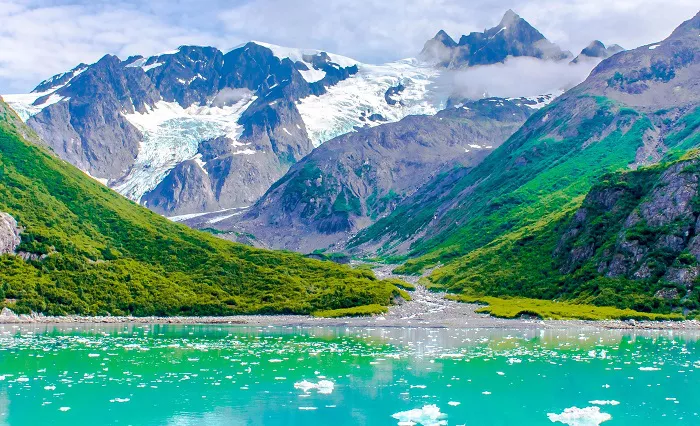Staff reductions at the National Park Service (NPS) in Alaska are expected to diminish oversight of critical natural resources, including wolves, whales, glaciers, and weather systems, during the peak 2025 summer tourism season. The staffing cuts coincide with an anticipated influx of 3.3 million visitors to a state that encompasses over half of all U.S. national park lands.
Despite the widespread downsizing, officials confirmed that the popular Fat Bear Week event at Katmai National Park and Preserve will proceed as scheduled.
The reductions are part of broader federal employment cuts implemented under former President Donald Trump’s administration, aimed at streamlining government and reducing taxpayer expenses. Under the directive of Interior Secretary Doug Burgum, spending authority has been expanded for Elon Musk’s DOGE team to prioritize fossil fuel development—including coal, oil, and gas—over traditional conservation efforts within the Park Service.
Public lands advocates have expressed alarm over the implications of these cuts, particularly in Alaska, where 60% of all NPS-managed land is located. Alex Johnson, Arctic and Interior Alaska campaign director for the National Parks Conservation Association (NPCA), warned that diminished staffing could degrade the quality of the visitor experience and hamper environmental stewardship.
“People come to Alaska for a once-in-a-lifetime opportunity to see bears, glaciers, and caribou,” Johnson said. “At this point, the Park Service lacks the resources and personnel to properly maintain those landscapes.”
Since Trump took office, NPS staffing had already declined by 20% from 2010 levels, even as 2024 saw a record-breaking 332 million park visitors nationwide. A recent analysis conducted by NPCA found that roughly 60 staff members—approximately one-third of the NPS regional workforce in Alaska—have departed through retirements, layoffs, buyouts, or terminations. The analysis excluded additional losses in individual parks, IT, or human resources personnel now managed centrally by the Interior Department.
Among the departures are key specialists including wildlife biologists, historians, fire ecologists, tribal liaisons, and interpretive experts. Notably, the position responsible for maintaining the automated weather monitoring stations—essential for aviation safety in Alaska—has been eliminated. Leadership roles remain unfilled at four of Alaska’s national parks.
The NPS manages over 54 million acres in Alaska, a territory larger than the state of Utah and home to iconic parks such as Denali, Kenai Fjords, and Wrangell-St. Elias—the largest national park in the U.S.
Nationwide, NPCA estimates that more than 2,500 NPS employees have exited under Trump’s tenure, in addition to around 1,000 probationary employees who were summarily dismissed. A federal budget proposal currently under debate in Congress could slash an additional $1 billion from the agency.
In interviews with USA TODAY, current NPS staff described a bleak outlook. One employee in Anchorage, speaking anonymously for fear of reprisal, likened preparations for their departure to “writing your own will,” noting that staff were backing up data and documenting workflows to preserve institutional knowledge.
While Trump has promised to bolster seasonal hiring to keep parks accessible to the public, former and current employees argue that these workers lack the training and tenure to take on essential long-term responsibilities such as tracking wildlife and monitoring environmental changes.
Earlier this month, five former NPS directors and several ex-agency leaders issued a letter cautioning that the cuts could lead to violations of federal mandates requiring the preservation of public lands for future generations. They criticized the Department of the Interior’s directive to focus staffing on immediate visitor services—such as open campgrounds and visitor centers—at the expense of resource protection.
“These orders risk placing NPS superintendents in impossible situations,” the former leaders wrote, warning that “crippling our parks and public lands will have an enormous financial impact on communities that depend on tourism for economic survival.”
One exception to the widespread cuts is Katmai National Park, where staffing levels have remained largely intact. Park officials confirmed that the annual Fat Bear Week livestream will continue, offering viewers the chance to watch brown bears feast on salmon at Brooks Falls—a seasonal spectacle that drew 10 million viewers last year.


